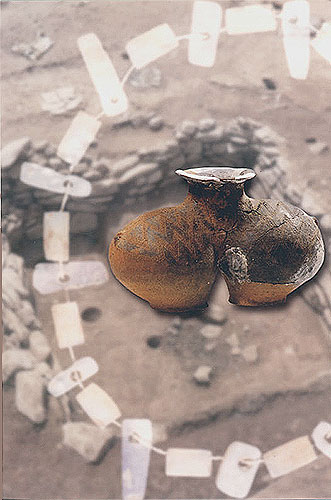| Art Q&A > Archeology |
|
|
Karuo Site
Archaeological site of the Neolithic Age
Location: Changdu County, the Tibet Autonomous Region
Period: 3,000-2,000 BC
Excavated from 1978 to 1979
Significance: The Karuo Culture is named after the site. It is the first excavation of the settlement site in the Tibetan Plateau.
Living on the "roof of the world" and at the
foot of the snow mountains, the Tibetan people in the Tibet Autonomous Region
have created splendid culture and arts, including a sea of rare cultural relics,
with unique ethnic style from generation to generation.
Karuo Site is the only archaeological site of the Neolithic Age among the 20 cultural relics in Tibet. The site covers an area of about 10,000 square meters and is considered by the archaeological world as one of the three Tibetan aboriginal cultural relics. The foundation of houses, paved roads, stonewalls, stone altars and pits were unearthed from the well-preserved site and a great number of stoneware, pottery, bone ware and other ornamental articles were discovered.
The pottery pot unearthed in Karuo, Qamdo Prefecture, was a rare relic of the Neolithic Age. It is made up of yellow clay and micro sand. Its surface is decorated with cutting strokes and black painting, and its body is in the shape of two beasts standing opposite to each other. |
||||
All rights reserved. Reproduction of text for non-commercial purposes is permitted provided that both the source and author are acknowledged and a notifying email is sent to us. |
||||
 |
 Introduction
Introduction